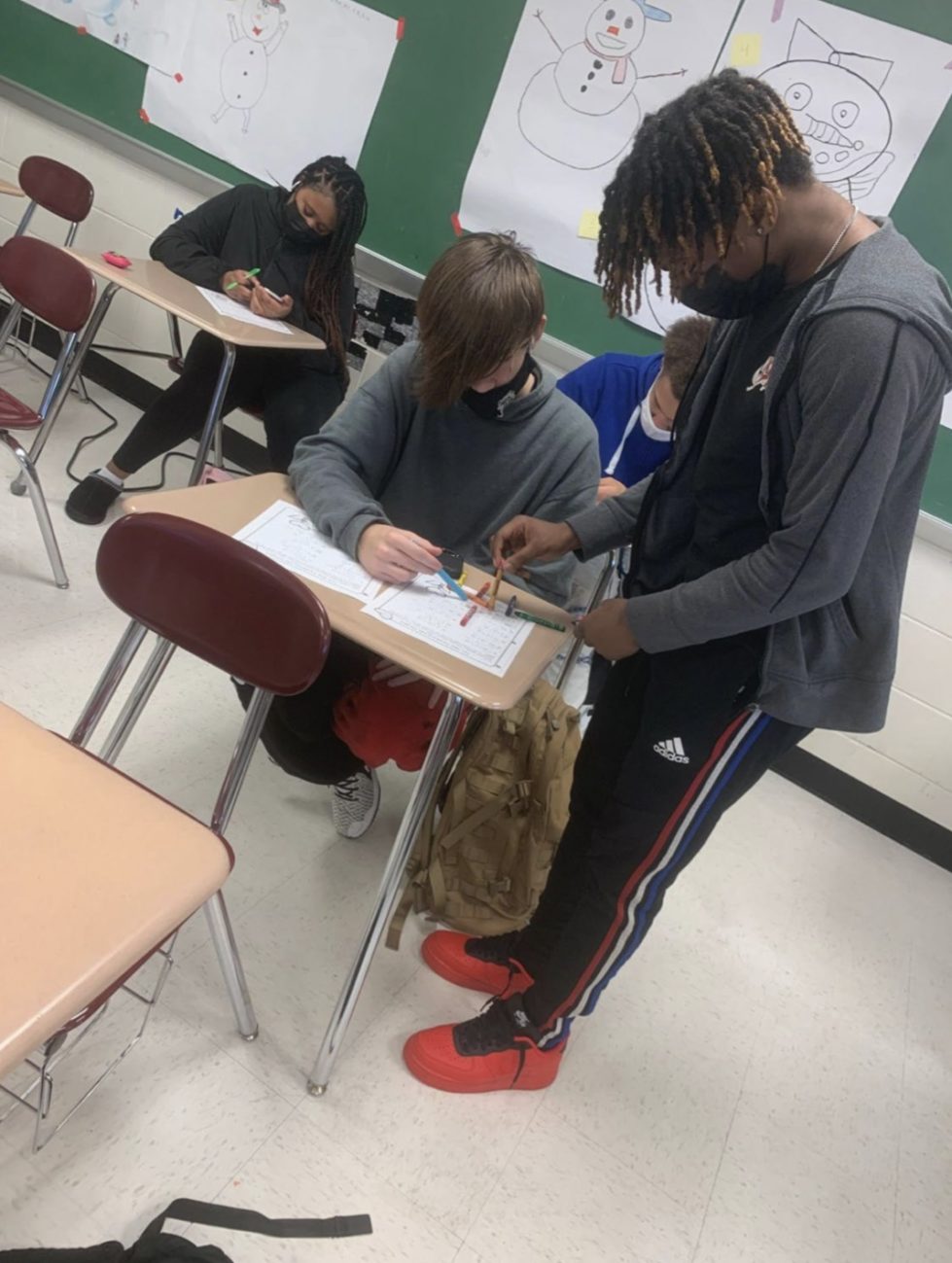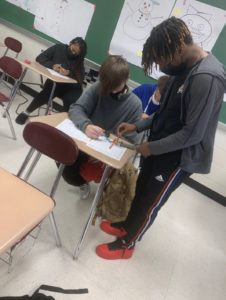by Terry Rogers
On Tuesday, February 22, Dr. Bridget Amory, Director of Student Learning, presented information on math curriculum chosen by a task force during a curriculum review. The task force included teachers from various grade levels as well as administrators in response to Board Policy 6111 which requires an ongoing curriculum recycle process to ensure students have access to the most current curriculum materials aligned with content standards.
“During the initial start of the math review, we actually postponed the secondary by a year during the decision when we were trying to look at the K 12 spectrum, so we are actually finally in the place where we will be able to make a recommendation moving forward and then all of our math curriculum will be aligned in the K 12 and in alignment with the board policy,” Dr. Amory said. “These math negotiables have guided our process. These were non-negotiables that we established with our math taskforce throughout the district when we started the process three years ago. And, in fairness to the process, it has been delayed a little bit because of the COVID pandemic. But we have certainly been able to pick up the momentum and been able to continue on to this is just a quick snapshot of the process that has been followed during each of the academic years as we’ve gone through this process. So last year, at the very end of the year, we finally narrowed down to two different programs. We chose Reveal math as well as enVisions math, and we agreed to pilot them in the fall of this year to be able to gain feedback from not only our staff, but also our secondary students as well.”
A slide presented by Amory showed that the math task force was inspired by the learning models included with Reveal, including Bloom’s Taxonomy and Webb’s Depth of Knowledge Guide. The ALEKS program uses artificial intelligence and open-response questions to identify what each student knows and does not know while the other components allow teachers to find the mathematician in every student using exploration methods, discourse and differentiation opportunities. The enVision Math program is for secondary schools and was built with Common Core State Standards. The program allows students to look at math in new ways and gives teacher flexible choices in resources. The teacher’s edition has supplemental work designed to help struggling students and there are components that allow students to use math concepts in real-life applications. The estimated cost for grades 6 through 8 was $138,536.45 while the cost for grades 9 through 12 was $126,197.34.
“The initial investment that will be involved with this would be very similar to other curriculum processes. We would like to negotiate a six-year replacement cycle with the company so we have included estimated quotes for what it would cost for us to invest in moving forward with the selection,” Dr. Amory said. “The secondary team did decide that they would like to purchase enVision math and that estimate is included on the presentation there. It is definitely within the realm of our anticipated budget expenses that we have been planning for. This would allow for us to have the necessary materials we would need for the next six academic years, and we would not have to h hopefully not have any additional expensive additions until we complete the next curriculum review cycle.”
The new curriculum would also include professional development. Dr. Amory explained that the finalized quote would be brought to the board at the March board meeting with hopes of purchasing in the spring and having materials onsite before teachers left at the end of the school year, allowing those who wished to review the material over the summer the opportunity to do so. According to Amory, there were about eight teachers involved in the pilot program across different grade levels.
“They actually selected the enVision Math over the Reveal Math,” Dr. Amory said when asked what the general consensus was regarding the curriculum. “They did, however, like the intervention program that is included in Reveal Math. It’s called ALEKS Math and that is something we would look at potentially buying in addition to the enVision Math that would serve as a potential intervention for any students who might need that resource at the secondary level, but that would be a separate purchase.”
Board President Jason Miller asked if there were neighboring districts using the curriculum and Dr. Amory explained that she did not know that off the top of her head. Board member Jean Wylie asked if there was a hands-on component with the curriculum and Dr. Amory stated that there was.
“I was just wondering as, over the years, as I’ve watched children progress through their math skills, you know, I’m just concerned that some get it and some don’t,” Wylie said. “those that don’t are getting frustrated, and then get left behind, so that was what I was wondering how this program worked with that.”
Dr. Amory explained that the district offered a Multi-Tier Support Program (MTSS) that is a safety net for students who are struggling. The ALEKS component could be an additional intervention to support those who need some extra instruction. Thompson pointed out that buying new curriculum was a significant expense.
“Historically speaking, there have been times when the district has bought new curriculum, but our proficiency scores don’t really seem to move a whole lot,” Thompson said. “I guess my question is, how are we possibly going to assess whether this would meet that goal of improving proficiency is especially because the pilot period overlapped another kind of drama, which would have decreased proficiency, so I’m just wondering how you guys attempted to address that, because proficiencies are what’s important to me, more so than the name of the curriculum.”
Continued monitoring of students was one way Dr. Amory felt the district could help improve proficiency.
“We will continue to be monitoring student progress not only through student performance that will be measured according to the current state assessment, which is Smarter Balance, but we will also have various assessments that are a component of the program that will be regularly participating in and having the ability to track those performance trends,” Dr. Amory said. “We do work within the district to have quarterly data meetings where we review student performance as well as teacher performance. So that we have ongoing conversations about those performance targets throughout the course of the year. This would definitely be something that we would continue to monitor as we work through the implementation process to see whether or not we need to make any adjustments to whether the pacing needs to be adjusted or if we need to potentially provide additional professional support for our staff, or if we need to, perhaps speed up or slow down instruction based on the trends that we’re seeing.”
Wylie questioned whether teachers had a comfort level teaching the curriculum and Dr. Amory stated that they did, pointing out that this was the curriculum requested by the teachers.
The final purchase cost for the two curriculums will be presented at the next board meeting, scheduled for March 21. All school board meetings are available in person or virtually.
Share this Post




